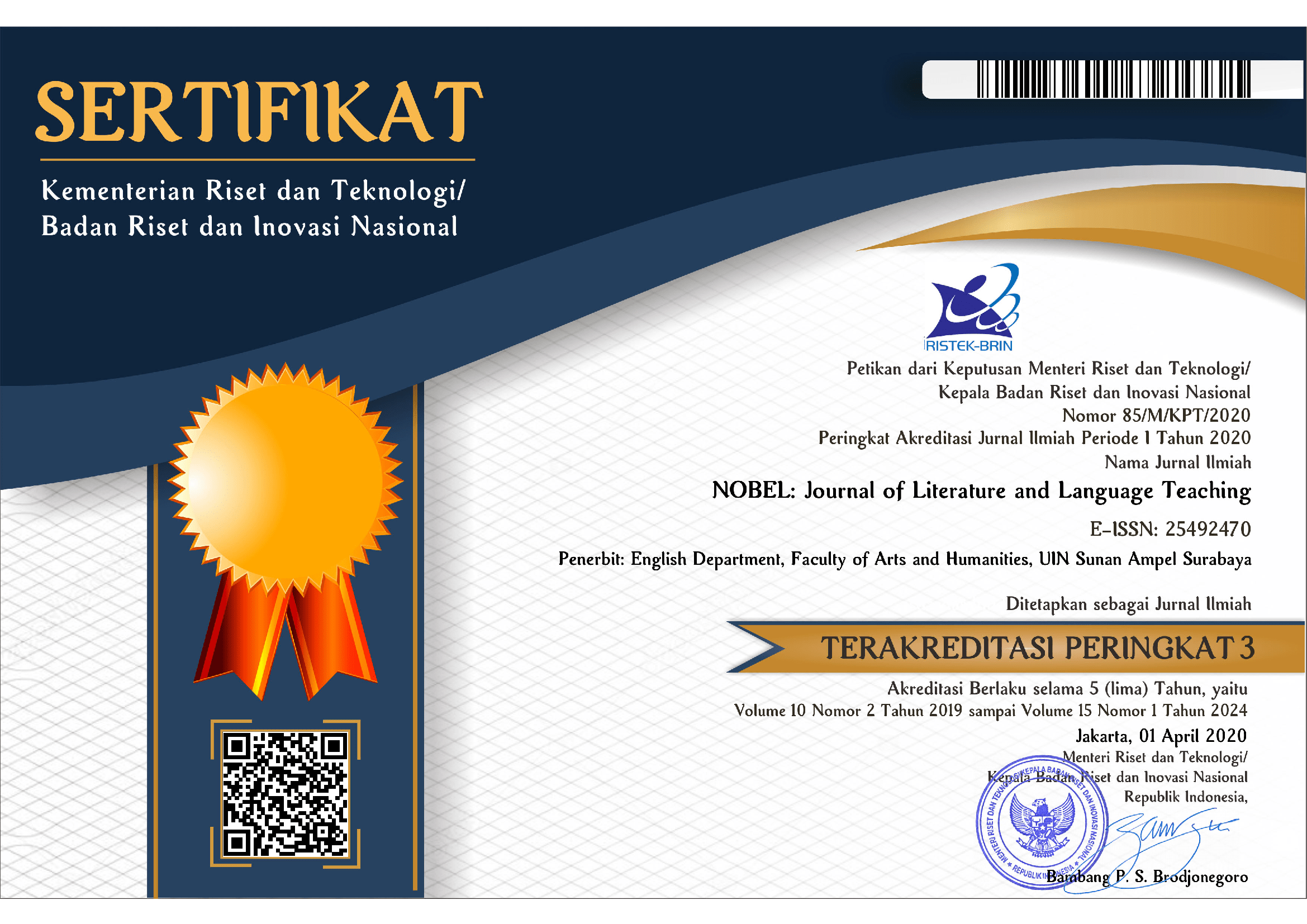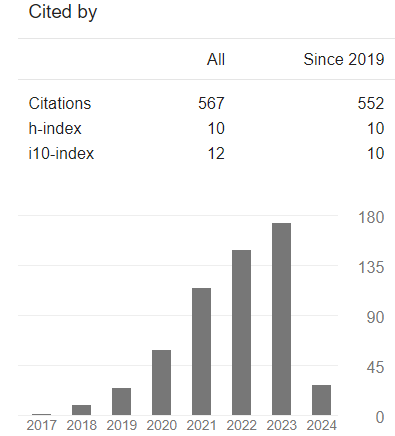Teacher's Display and Referential Questions
DOI:
https://doi.org/10.15642/NOBEL.2016.7.1.65-77Keywords:
display question, referential question, communicationAbstract
This paper discusses an English teacher's display and referential questions in teaching speaking at MAN 3 MALANG. It investigated the ways teacher employed display and referential questions, students' responses, and the ways the questions maintained communication in the classroom. The observations in several meetings were applied and were confirmed by the instructional objectives stated in lesson plans and syllabus. It was found that the teacher mostly employed referential questions rather than display questions in teaching speaking. The employment of display questions was put in the beginning of the lesson and was functioned as ice breaker or warmer. Through display and referential questions, the communication in teaching speaking was maintained. It suggests that the teacher applies questioning strategies in employing referential questions so that the communication in the classroom is well-maintained.
Downloads
References
Brock, C. A. (1986). The Effects of Referential Questions on ESL Classroom Discourse. TESOL quarterly Vol.20No. 1, 47-59.
Brown, H. D. (2000). Teaching by Principles : An Interactive Approach to Language Pedagogy (2nd ed.). White Plains, NY: Longman.
Harmer, J. (2008). The Practice of English Language Teaching. New York: Pearson/Longman.
Hassan, S. (2013). Effects of Teacher Question Types And Syntactic Structures on EFL Classroom Interaction. The International Journal of Social Sciences Vol.7No. 1, 52-62.
Hinkel, E. (2006). Current Perspectives on Teaching The Four Skills. Tesol Quarterly Vol.40No. 1, 109-131.
Long, M. H, and Sato, C. J. (1983). Classroom Foreigner Talk Discourse: Forms and Functions of Teachers’ Questions. In H. W. Seliger & M. H. Long (Eds.), Classroom Oriented Research in Second Language Acquisition (pp. 268-285). Rowley: Newbury House.
Miller, P. W. (1988). Nonverbal Communication. What Research Says to the Teacher. Washington DC: National Education Association.
Nunan, D. (1987). Communicative Language Teaching: Making It Work. ELT journal Vol.41No. 2, 136-145.
Richards. J. C, and Schmidt, R. (Eds.). (2010) (4th ed.). Harlow: Longman.
Richmond, V. P., and Wrench, J. S. (2009). Communication, Affect, and Learning in The Classroom (3rd ed.). United States of America: Tapestry Press.
Rohmah, Z. (2002). Teacher's Questions in Reading Classes. TEFLIN Journal Vol.13No. 2, 1-8.
Seedhouse, P. (1996). Classroom Interaction: Possibilities and Impossibilities. ELT Journal Vol.50No. 1, 16-24.
Setiawati, L. (2012). A Descriptive Study on the Teacher Talk at EYL Classroom. Conaplin Journal Vol.1No. 2, 33-48.
Shomoossi, N. (2004). The Effect of Teachers’ Questioning Behavior on EFL Classroom Interaction: A Classroom Research Study. Reading Vol.4No. 2, 96-104.
Wilen, W. W (Ed.). (1987). Questions, Questioning Techniques, and Effective Teaching. Washington DC: National Education Association.
Yang, C. C. R. (2010). Teacher Questions in Second Language Classrooms: An Investigation of Three Case Studies. Asian EFL Journal Vol.12No. 1, 1-22.
Yulia, Y. (2013). Teaching Challenges in Indonesia: Motivating Students and Teachers’ Classroom Language. Indonesian Journal of Applied Linguistics Vol.3No. 1, 1-16.







